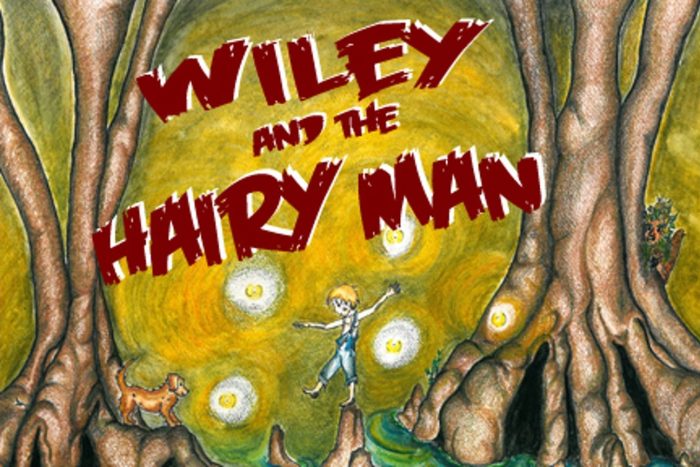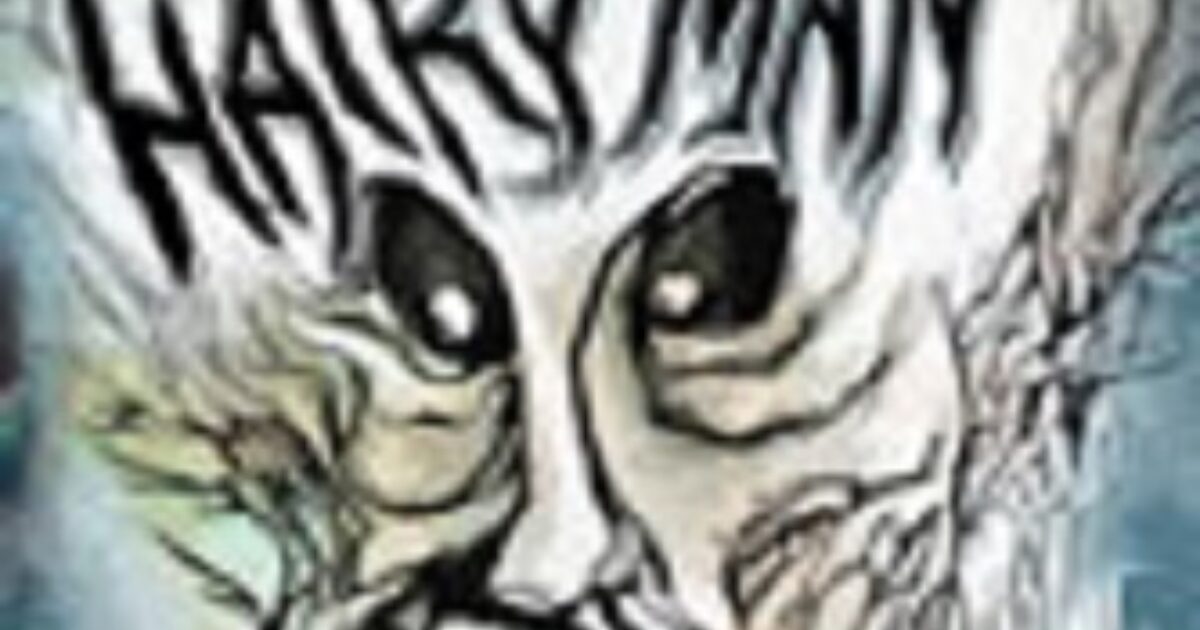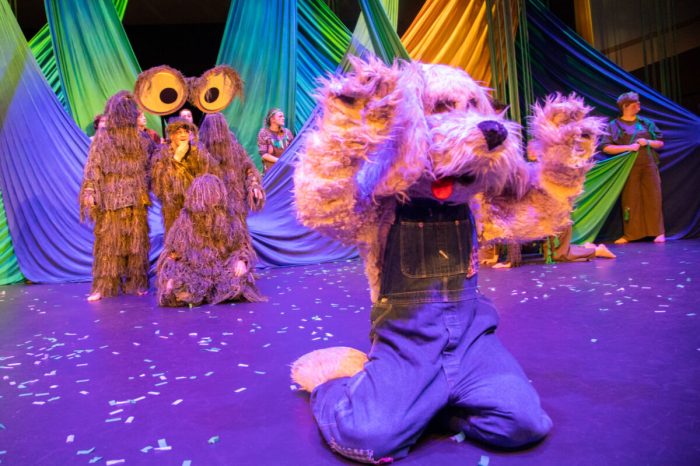Embark on a captivating journey with “Wiley and the Hairy Man Play,” a timeless tale that explores the complexities of identity, belonging, and the eternal struggle between good and evil. Prepare to be mesmerized by a narrative woven with symbolism, foreshadowing, and a cast of unforgettable characters.
At the heart of this enchanting play lies Wiley, a young man grappling with his place in the world. His encounter with the enigmatic “hairy man” sets in motion a series of events that challenge his beliefs and force him to confront his true nature.
As the plot unfolds, we witness the clash between light and darkness, as Wiley navigates a world of temptations and moral dilemmas.
Character Analysis

Wiley, the protagonist of the play, is a complex and multifaceted character. He is a young man who is struggling to find his place in the world. He is intelligent and ambitious, but he is also naive and impulsive.
Wiley’s motivations are driven by a desire for adventure and a longing for something more than the ordinary. He is drawn to the unknown and the dangerous, and he is always looking for new challenges. However, his impulsivity often leads him into trouble.
Relationships, Wiley and the hairy man play
Wiley’s relationships with others are often strained. He is close to his mother, but he often clashes with his father. He has a few friends, but he is often lonely and isolated. Wiley’s relationships are often characterized by misunderstandings and conflict.
The Hairy Man
The hairy man is a mysterious and enigmatic figure who appears to Wiley throughout the play. He is a symbol of Wiley’s inner demons and the challenges he must face. The hairy man is a powerful and dangerous figure, but he is also a source of wisdom and guidance.
Plot Summary

Wiley and the Hairy Manis a play that follows the journey of Wiley, a young boy who encounters a mysterious creature in the woods. The play explores themes of courage, friendship, and the power of imagination.
Climax
The climax of the play occurs when Wiley confronts the Hairy Man in the woods. Wiley must overcome his fears and use his imagination to defeat the creature.
Resolution
The play concludes with Wiley defeating the Hairy Man and returning home. The experience has taught him the importance of courage and imagination, and he is now a more confident and self-assured boy.
Themes and Motifs

The play “Wiley and the Hairy Man” delves into several profound themes that resonate with the human experience. These themes are explored through the interactions of the characters and the events that unfold.
One of the central themes is the struggle between good and evil. This conflict is embodied in the character of Wiley, who represents the forces of good, and the Hairy Man, who represents evil. Throughout the play, Wiley must overcome numerous challenges and temptations in order to ultimately defeat the Hairy Man and restore balance to his community.
Identity and Belonging
Another important theme is the search for identity and belonging. Wiley is an orphan who has never known his true parents, and he struggles to find his place in the world. As he embarks on his journey to defeat the Hairy Man, he begins to discover who he truly is and where he belongs.
The play also explores the theme of prejudice and discrimination. Wiley is often judged and mistreated because of his appearance and his lack of family. However, he never gives up on himself, and he eventually earns the respect of those around him.
Literary Devices

The play “Wiley and the Hairy Man” employs various literary devices to enhance its meaning and impact on the audience.
The hilarious antics of Wiley and the Hairy Man will have you in stitches. But did you know that the polarity of TIG welding, as explained here , can also be a source of amusement? Just imagine Wiley trying to weld with the wrong polarity.
The sparks would fly, and the results would be, well, hairy!
One significant device used is symbolism. The hairy man himself represents the dangers and challenges that Wiley faces as he navigates the wilderness. His physical appearance, with his sharp teeth and claws, evokes fear and represents the potential for harm that lurks within the unknown.
Another literary device is foreshadowing. Throughout the play, subtle hints are dropped that foreshadow events to come. For instance, when Wiley’s father warns him of the dangers of the wilderness, it foreshadows the encounter with the hairy man. These foreshadowing elements create suspense and build anticipation, keeping the audience engaged.
Ironyis also employed in the play. The title itself is ironic, as the “hairy man” turns out to be a protective spirit rather than a menacing threat. This irony highlights the contrast between expectations and reality, adding depth to the play’s message.
Historical and Cultural Context
Wiley and the Hairy Man was written in the early 1900s, a time of significant social and cultural change. The play reflects the values and beliefs of its time period, including the importance of community, the role of women, and the power of nature.
Social and Cultural Changes
The early 1900s was a period of rapid urbanization and industrialization. As people moved from rural areas to cities, they were forced to adapt to new ways of life. The play reflects this change through its depiction of the tensions between rural and urban life.
Importance of Community
In Wiley and the Hairy Man, the community plays a vital role in the lives of the characters. The townspeople are supportive of one another, and they work together to solve problems. This sense of community is a reflection of the values of the time period, which emphasized the importance of family and friends.
Role of Women
The play also reflects the changing role of women in society. At the time the play was written, women were increasingly entering the workforce and gaining more independence. Wiley and the Hairy Man features several strong female characters who challenge traditional gender roles.
Power of Nature
Nature plays a significant role in Wiley and the Hairy Man. The forest is a place of both danger and beauty, and it is home to the Hairy Man, a mysterious creature who represents the untamed forces of nature. The play’s depiction of nature reflects the growing awareness of the importance of the environment during the early 1900s.
Comparison to Other Works: Wiley And The Hairy Man Play
Wiley and the Hairy Manshares similarities with various literary genres, including fairy tales and morality plays. However, it stands out with unique elements and contributions.
Fairy Tales
Like fairy tales, Wiley and the Hairy Manfeatures a protagonist facing challenges, magical creatures, and a moral lesson. However, the play’s focus on social commentary and realistic characters sets it apart from traditional fairy tales.
Morality Plays
Similar to morality plays, Wiley and the Hairy Manpresents a didactic message about the consequences of good and evil. However, the play’s use of humor and satire distinguishes it from conventional morality plays.
Unique Elements
- Social Commentary:The play critiques social issues such as poverty, inequality, and the dangers of greed.
- Realistic Characters:The characters in the play are not idealized heroes or villains but flawed individuals with relatable motivations.
- Satire and Humor:The play employs satire and humor to expose social ills and provide a cathartic release for the audience.
Adaptations and Interpretations
The play “Wiley and the Hairy Man” has undergone numerous adaptations and interpretations, ranging from stage productions to film versions and literary criticism. These adaptations have significantly shaped the play’s legacy and meaning, influencing how audiences perceive and engage with the work.
Stage Productions
Stage productions of “Wiley and the Hairy Man” have been mounted worldwide, with each interpretation offering unique insights into the play’s themes and characters. Some productions have emphasized the play’s folkloric elements, utilizing traditional music, dance, and costumes to create an immersive experience.
Others have taken a more modern approach, updating the setting and characters to reflect contemporary social issues.
Film Versions
Several film adaptations of “Wiley and the Hairy Man” have been produced, each bringing its own perspective to the story. The 1970 film adaptation, directed by Don Chaffey, is a classic interpretation that remains popular today. It faithfully adapts the play’s plot and characters, capturing the spirit of the original work while introducing cinematic elements such as stunning scenery and evocative music.
Literary Criticism
Literary critics have engaged with “Wiley and the Hairy Man” from various perspectives, offering interpretations that explore the play’s social, psychological, and historical significance. Some critics have focused on the play’s representation of gender roles and power dynamics, while others have examined its portrayal of race and class relations.
By analyzing the play’s language, structure, and characters, critics have shed light on its underlying themes and messages.These adaptations and interpretations have collectively shaped the legacy of “Wiley and the Hairy Man,” making it a multifaceted and enduring work of art.
They have allowed audiences to experience the play in different ways, fostering a deeper understanding and appreciation of its timeless themes and characters.
Essential FAQs
What is the significance of the “hairy man” in the play?
The “hairy man” represents the wild and untamed aspects of nature and the subconscious mind. He challenges Wiley’s preconceived notions and forces him to confront his inner demons.
How does the play explore the theme of identity?
Through Wiley’s journey, the play examines the complexities of identity formation and the influence of both internal and external factors on our sense of self.
What literary devices are employed in the play?
The play utilizes symbolism, foreshadowing, and irony to create a rich and evocative narrative that enhances the play’s themes and character development.